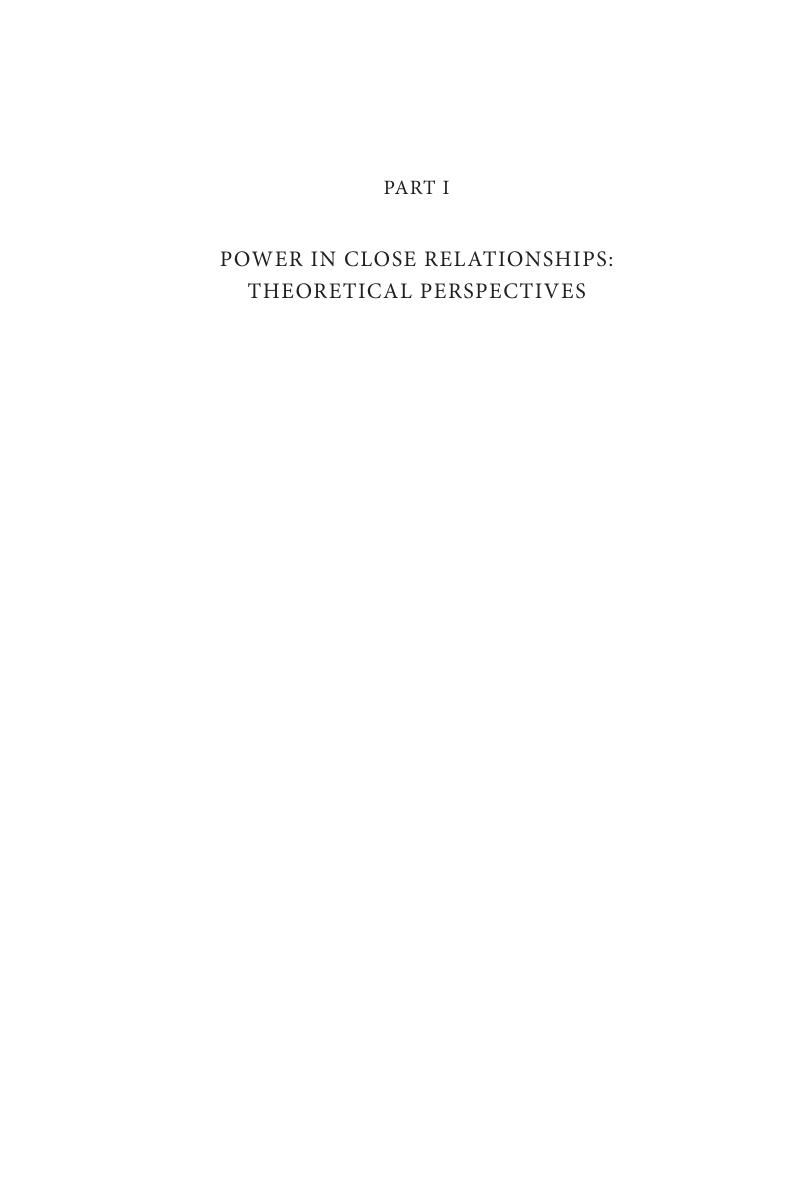Book contents
- Power in Close Relationships
- Advances in Personal Relationships
- Power in Close Relationships
- Copyright page
- Contents
- Figures
- Tables
- Contributors
- Acknowledgments
- Introduction: Power in Close Relationships
- Part I Power in Close Relationships: Theoretical Perspectives
- Part II Power in Close Relationships: Interpersonal Contexts
- Index
- References
Part I - Power in Close Relationships: Theoretical Perspectives
Published online by Cambridge University Press: 19 February 2019
- Power in Close Relationships
- Advances in Personal Relationships
- Power in Close Relationships
- Copyright page
- Contents
- Figures
- Tables
- Contributors
- Acknowledgments
- Introduction: Power in Close Relationships
- Part I Power in Close Relationships: Theoretical Perspectives
- Part II Power in Close Relationships: Interpersonal Contexts
- Index
- References
Summary

- Type
- Chapter
- Information
- Power in Close Relationships , pp. 7 - 140Publisher: Cambridge University PressPrint publication year: 2019

